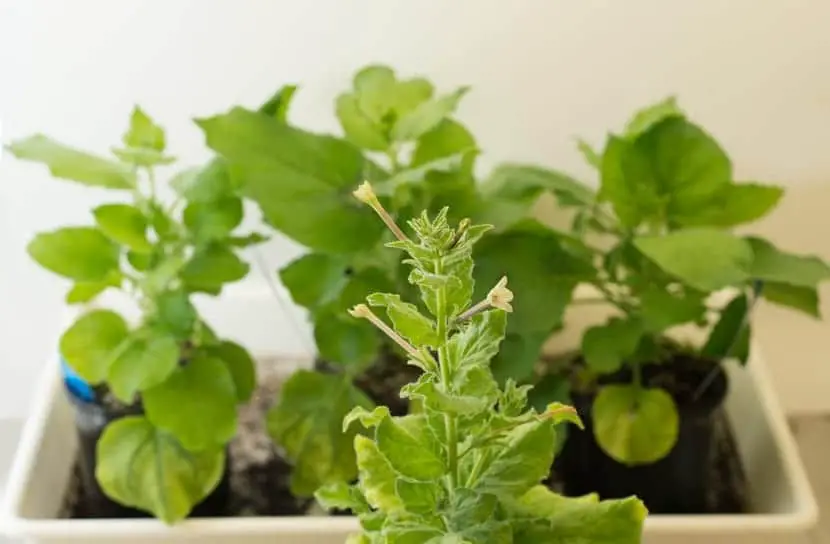
The Nicotiana benthamiana it is herbaceous plantbelonging to the Solanaceae family. This Nicotiana is a favorite of scientists around the world, who use it in various research and studies on various viruses and vaccines.
Origin and habitat

It is a native plant of Oceania, more specifically Australia where it can be seen in the wild. Usually grows in rocky hills, outcrops, or caves.
Characteristics Nicotiana benthamiana
The Nicotiana benthamiana It is a plant whose leaves and stems are discreetly pubescent with glandular trichomes. us stem leaves; the upper ones are short and sessile, while the lower ones are petiolate; basal, with a petiole about 6 centimeters long.
Its white, solitary and odorless flowers grow from the armpits, similar to thick bracts during some stages of its development, the tube of its corolla, which is 20 to 60 millimeters long, unfolds at night. Their lobes are usually extended or curved, slightly notched.
As for its anthers, two of them are usually on top of the other two, They have 5 stamens, 4 of them are preserved above the stigma and the remainder below. Its seeds are contained in capsules that go from ovoid to ellipsoid up to 13 mm in length.
Its seeds are reniform, that is look like a kidney. Although its characteristics suggest a preference for crossbreeding, this plant is self-compatible and also prone to cross-pollination.
Curiosities
While it is true, the plant lacks an immune system that leaves it exposed to diseaseit frees energy to germinate and develop rapidly, energy that could be used for its defense. Of course, this characteristic does not seem advantageous in areas where pathogens abound, but it is, since it allows it to coexist with its main enemy, the intense drought in the region where it lives. Its ability to produce seeds quickly and self-fertilize, even after low rainfall, has helped it survive amid the intense climate of Central Australia for more than 700.000 years.
The Nicotiana benthamiana It has been used in laboratories all over the world, in research on viruses and vaccines, due to its exceptional characteristic of not having an immune system. Nevertheless This peculiarity has made it a considerably resistant plant.
To the point that it is one of the most used experimental elements in plant virology, due to the immense variety of viruses that can infect it. Hence, it is prone to a variety of agents such as bacteria, molds, fungi and others. Which has undoubtedly made it a kind of cornerstone for scientific researchessentially in the subjects of the immunity and the defense of the organisms.
In the field of genetics it also plays a role of great importance, due to its peculiar lack of immune system that also identifies it as a fundamental element in the molecular laboratories of the planet. Its importance is so relevant that it was used to develop an experimental antibody to fight the dangerous Ebola virus. Scientists compare Nicotiana to nude lab mice.

Another significant aspect of this plant is that its trait can be transferred to other plants. So researchers can discover how to turn other plant species into nude nude mice for research purposes. So, in the same way as mice are used in cancer research, Nicotiana and its vegetable versions could well accelerate research in the agricultural field.
Another of the benefits of this plant is its use in the manufacture of recombinant proteins, including biopharmaceuticals, vaccines and biomaterials. In addition, its large seeds make it a perfect genre for commercial use As a biofactory, because the size of its seeds gives it more performance in the production of drugs.

